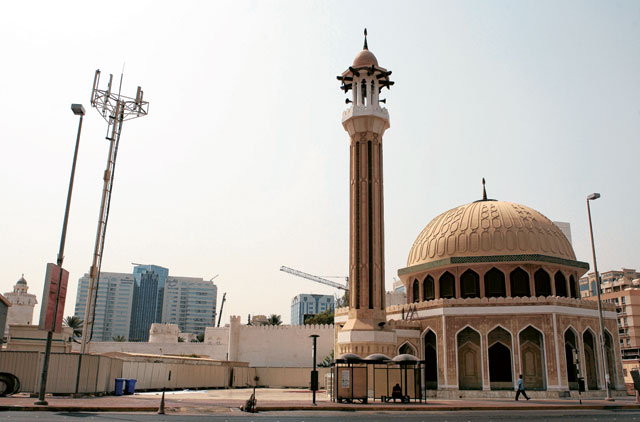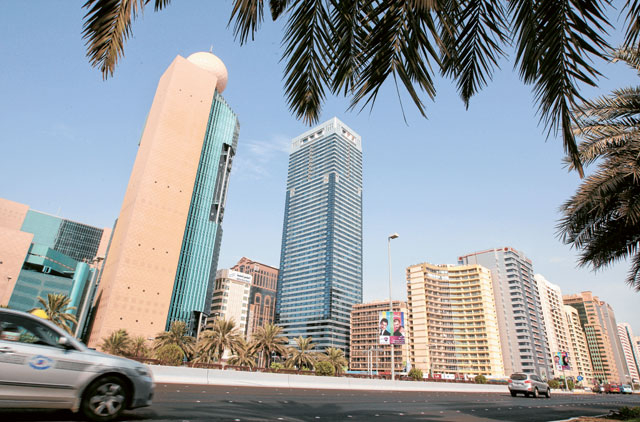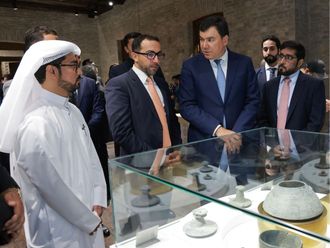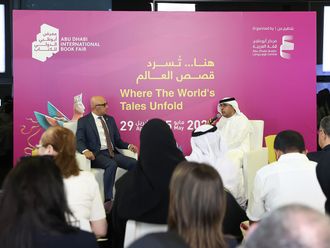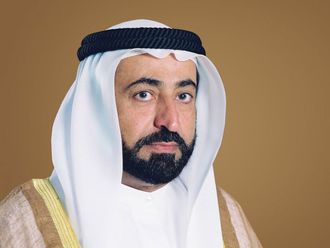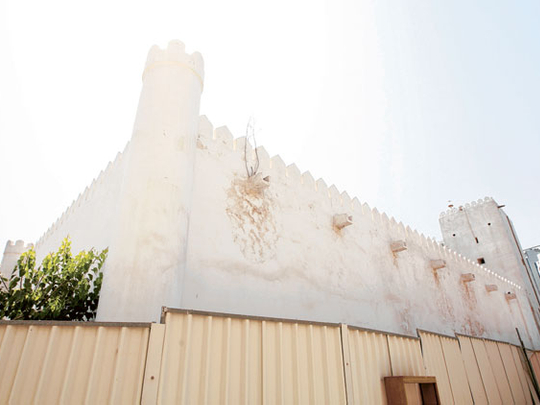
Abu Dhabi: A white fortress stands tall in the heart of Abu Dhabi. Its towers have long watched over the surrounding civilisation, and as the city entered the era of modernity, the fortress staunchly remained guard over it. In it developed a stunningly beautiful palace, with shaded courtyards and other traditional elements.
This is Qasr Al Hosn (translated into English as Al Hosn Fort), an iconic landmark based in the capital city and is featured on the Dh1,000 currency note.
Situated along Shaikh Rashid Bin Saeed Al Maktoum Street (Old Airport Road), the fortress developed from a solitary watchtower and military stronghold into the literal and symbolic seat of power in Abu Dhabi.
According to the Abu Dhabi Authority for Culture and Heritage (ADACH), the structure was built in the emirate of Abu Dhabi in 1760 when the leader of the Bani Yas tribes, Shaikh Diab Bin Eisa, constructed it to guard precious freshwater resources against raiders. During his son's reign, the tower developed into an impregnable fort.
When the Bani Yas tribe eventually moved to the coast when the emirate's importance grew in the 18th century, the ruling shaikhs decided to transfer their place of residence from Liwa Oasis to Qasr Al Hosn on Abu Dhabi island.
As the flourishing pearl-diving industry in the region brought about political, economic and military growth in the late 19th and early 20th century, Shaikh Zayed Bin Khalifa (1855-1909) expanded the palace to reflect the increasing wealth and power of the emirate.
Expansion
In the 20th century, both Shaikh Shakhbut Bin Sultan (1928-1966) and Shaikh Zayed Bin Sultan Al Nahyan (1966-2004) improved and expanded the fortress and palace as the discovery of oil ushered in an era of economic development.
The palace and fort were originally built using many locally-available materials like coral stone and lime, but today they also have imported mangrove poles for the ceilings, Aqeel Ahmad Aqeel, historic building conservator at the ADACH, said.
"Qasr Al Hosn, which is also known as the White Fort, is one of the biggest forts in the emirate. Its architecture is traditionally Emirati, and over the years, it has been restored and renovated many times," Aqeel explained.
He also detailed how features of the palace have been adapted to Emirati lifestyle.
"For example, there is a room at the top of the southeastern corner of the two-floor palace which was used by Shaikh Shakhbut Bin Sultan for relaxation. It catches the wind from all directions, and is ideal in a desert environment," Aqeel said.
Library and galleries
Over the years, the 2,600 square metre Qasr Al Hosn became popularly known as the Cultural Foundation because of the host of community-based events organised in the 21,000 square metre adjoining facility. Its library and galleries have also enhanced Qasr Al Hosn's cultural image.
In 2010, however, the structure was officially closed for renovation by the ADACH.
"I remember that the annual book fair was a popular event at the Cultural Foundation, and some of my friends were also very interested in the various film and photo competitions that used to be organised there," Tanveer Ashraf, a 24-year-old doctor, told Gulf News.
"I was born in Abu Dhabi, and therefore grew up with the Cultural Foundation being a significant part of my life. So, I was pretty sad to see it close to the public. I do hope it opens up soon, because I would love to visit it again," he added.
Fond memories
Other residents who grew up in the city also harbour many fond memories of Qasr Al Hosn.
"At the start of every weekend, my friends and I used to head to the Cultural Foundation to watch the movies that were screened there. As pupils with no source of income, the Dh5 fee for watching blockbuster movies was a bargain we could not resist. I still remember watching Shrek 3 there with a group of close friends," said Afrina Nasrin, a 17-year-old university student from Bangladesh.
Nasrin also mentioned how she used to visit the facility's library frequently.
"I live just a five-minute walk away from the Qasr Al Hosn, so I used to go by the place often. I must say I also learnt a lot about Emirati culture because of the exhibitions that were held there. For instance, there used to be a hall full of photographs which depicted sources of livelihood for Emiratis before the discovery of oil, like pearl diving and fishing."
Classical concerts
Ahmad Lotfy, another long-time resident who was born in Abu Dhabi, said he misses the events that used to take place regularly at the Cultural Foundation.
"It was a place where you would run into people from all walks of life. One of the things I enjoyed the most was attending classical music concerts. It felt special to witness a cultural event at a culturally significant landmark," Lotfy said.
He added that the various classes that used to be organised at the Cultural Foundation provided constructive outlets for people of all ages.
"The classes, which centred on activities like photography and painting, made productive use of people's time. It was a centre of all things cultural," Lotfy added.
According to ADACH's plans for Qasr Al Hosn, the historic landmark is currently being developed into a cultural quarter.
"While many features like the Cultural Foundation's library will be retained, other design elements are still being finalised," Aqeel said.
"A variety of traditional Emirati activities will also be organised at the facility once it is re-opened to the public," he added.
The reopening of the facility is a day that cannot come soon enough for most residents, for whom the enduring Qasr Al Hosn still holds a special appeal.


